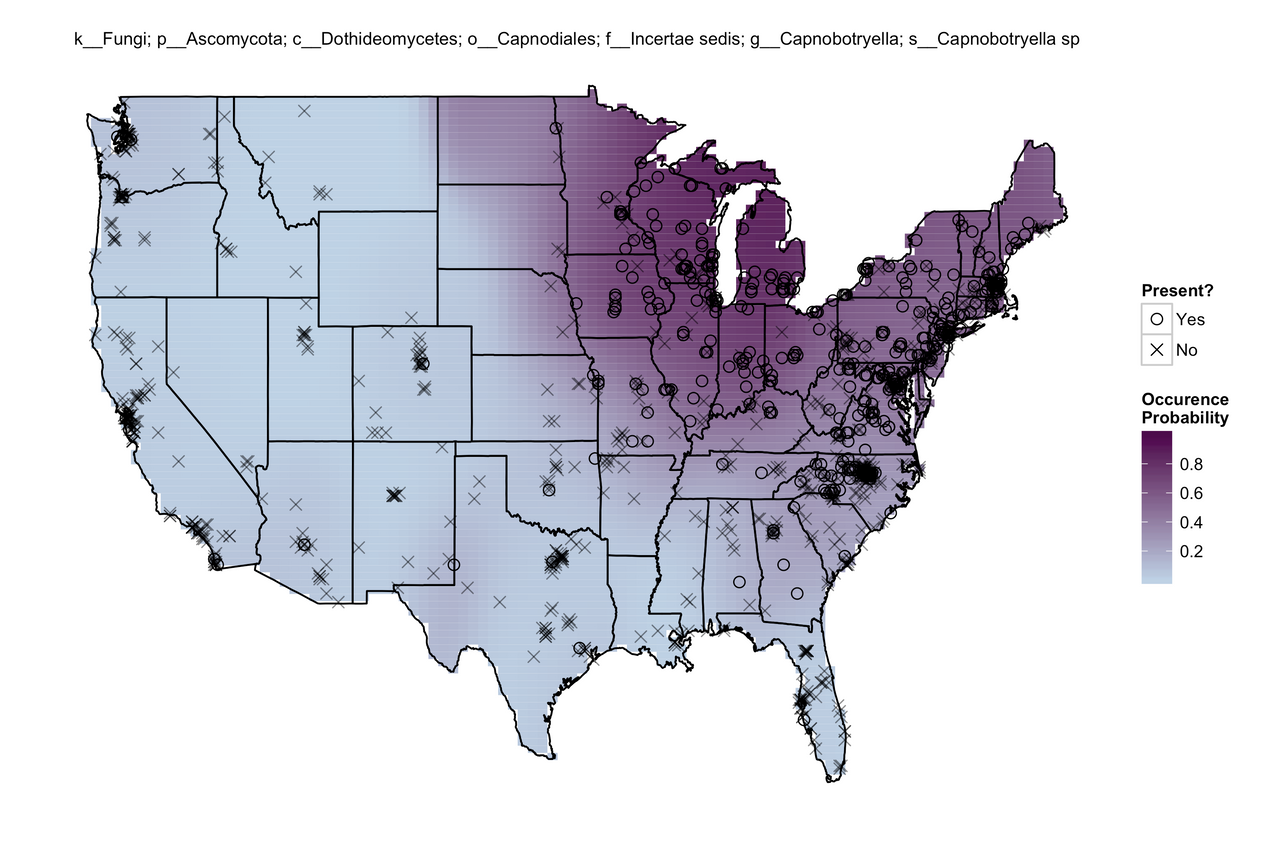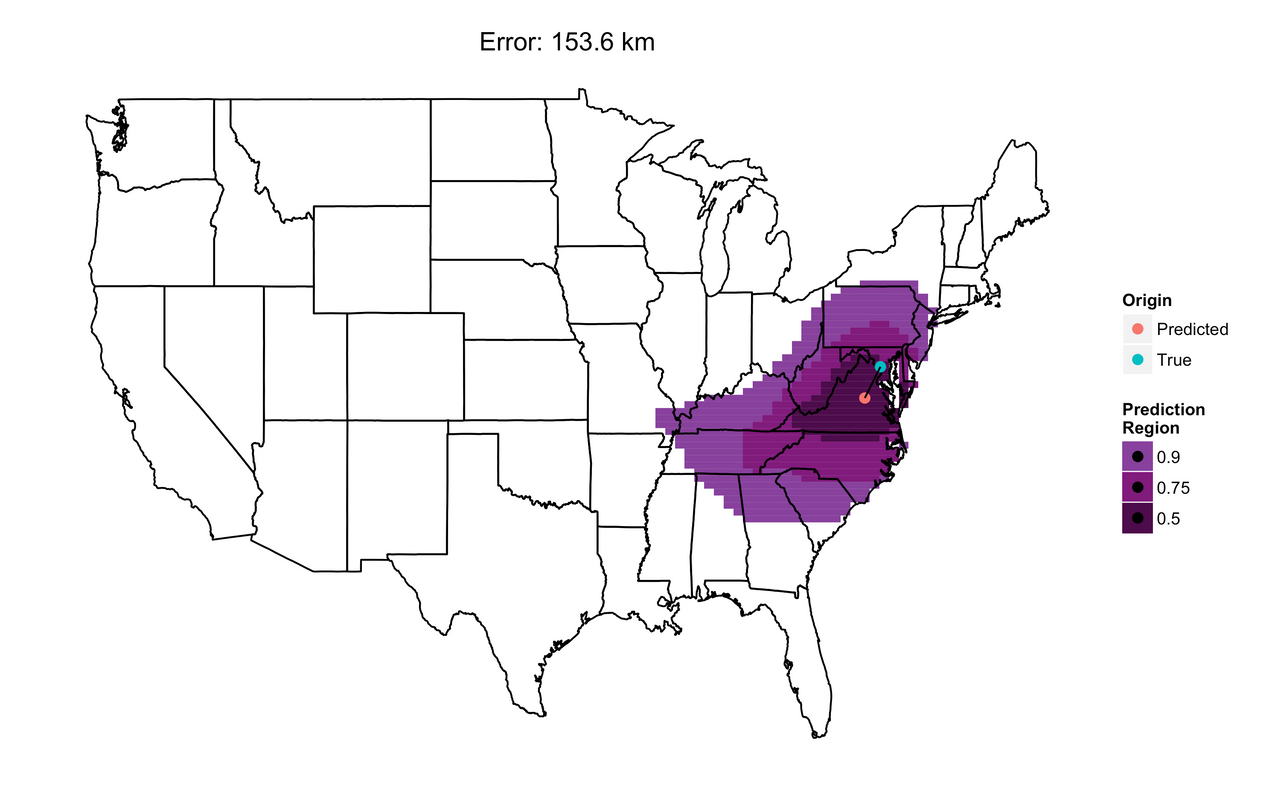Neal Grantham
Spatial models for forensic geolocation
Every speck of dust contains thousands of bacteria, fungi, and other microbes. This “microbiome” varies across geographies, so much so that dust collected from an unknown location can be traced back to its approximate origin with high accuracy. The figure below shows the spatial distribution of a single fungus among tens of thousands of fungi observed in dust swabs from over 1,000 locations across the United States.


In the following papers, my collaborators and I develop statistical models for forensic geolocation using microbiome data from high-throughput sequencing.
Grantham, NS, Reich, BJ, Laber, EB, Pacifici, K, Dunn, RR, Fierer, N, Gebert, M, Allwood, JS, Faith, SA (2020). Forensic Geolocation with Deep Neural Networks. Journal of the Royal Statistical Society (JRSS). Code available at github.com/nsgrantham/forensic-geolocation.
Grantham, NS, Reich, BJ, Pacifici, K, Laber, EB, Menninger, HL, Henley, JB, Barberan, A, Leff, JW, Fierer, N, Dunn, RR (2015). Fungi Identify the Geographic Origin of Dust Samples. PLOS ONE. Code available at github.com/nsgrantham/fungi-identify.
This work was featured in Can Specks of Dust Help Solve Crimes? (TIME) and Researchers Can Trace Dust Samples Using Fungal DNA (NC State).